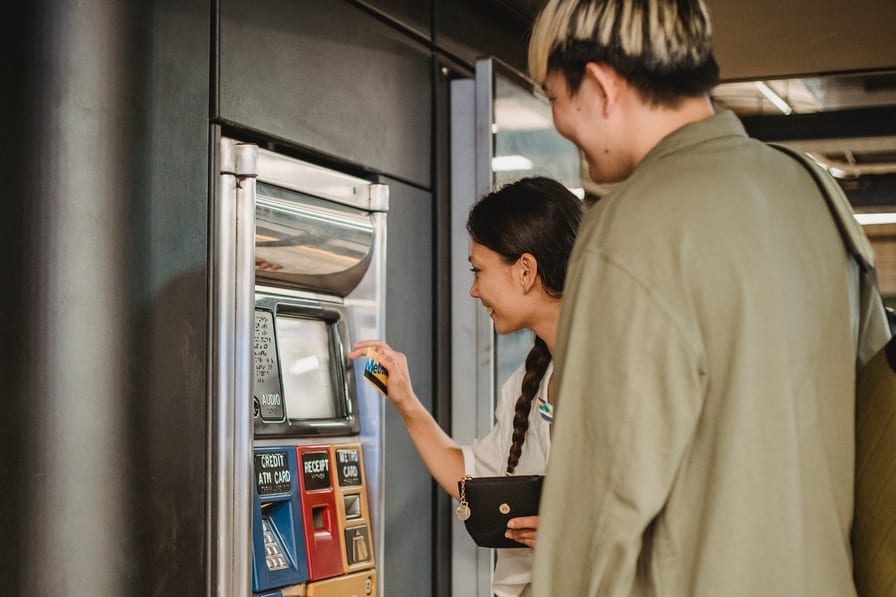Businesses today need to take many things into consideration when setting up shop for a specific demographic. For starters, the process of market research and discovering if there’s a gap your product or service can fill is difficult and challenging on its own. Once you have your proverbial “niche” to attract the right kind of customers, you’ll most likely sigh with relief. Yet, having a solid product or service to offer is not the same as inspiring people to actually buy it.
In addition to intricate advertising and marketing campaigns, ongoing social media efforts, not to mention comprehensive SEO to put you on the map – where do you stand on payment methods? If you make assumptions based on stereotypes, such as that baby boomers inherently prefer paper cash or cards instead of mobile phones, you risk losing out on the portion of that demographic that actually uses phones.
Why? Because as it turns out, research on how different age groups prefer to pay has shown that baby boomers, while slower to adapt, are also getting on the mobile bandwagon, with 64% of them have reported using a mobile banking app, while almost 40% have noted an increased reliance on mobile banking during the pandemic.
It’s knowledge like this that can make or break your connection with your customers, based on their age group. Let’s figure out how different age groups prefer to pay for goods and services, to hopefully give you the means to strengthen your bonds with your target audience.
In addition to intricate advertising and marketing campaigns, ongoing social media efforts, not to mention comprehensive SEO to put you on the map – where do you stand on payment methods? If you make assumptions based on stereotypes, such as that baby boomers inherently prefer paper cash or cards instead of mobile phones, you risk losing out on the portion of that demographic that actually uses phones.
Why? Because as it turns out, research on how different age groups prefer to pay has shown that baby boomers, while slower to adapt, are also getting on the mobile bandwagon, with 64% of them have reported using a mobile banking app, while almost 40% have noted an increased reliance on mobile banking during the pandemic.
It’s knowledge like this that can make or break your connection with your customers, based on their age group. Let’s figure out how different age groups prefer to pay for goods and services, to hopefully give you the means to strengthen your bonds with your target audience.
Not Your Stereotypical Baby Boomer
Prejudice and bias are prevalent everywhere, and marketing is no different. Thankfully, we have fresh research that will help companies finally take a closer look at how different age groups prefer to pay – which will in turn give you the power to change how you market to those groups.
Yes, baby boomers are known as the tradition-loving, stuck-in-their-ways age group with certain habits that are hard to change. Despite all of that, boomers are showing slow, but steady and ever-increasing interest in digitalization and technology in their everyday lives.
After all, they are in need of greater convenience and simplification, so while they might be accustomed to physical bank visits and cash, they are warming up to digital payment solutions almost as much as your younger audience. On one hand, the majority of baby boomers, over 70% of them on a global scale still prefer methods they are accustomed to: cash, credit, and debit cards. Then again, 45% of them acknowledged the pleasure of using mobile wallets for simplicity.
The key takeaway for this generation? For starters, stick to simplicity. Even if you offer in-app, mobile, and digital banking payment options, simple checkout and convenience will land you their purchase.
● Exceptional customer service is any baby boomer’s top priority. If you give them the assistance they need and help simplify payment-related processes, you’ll earn their trust, respect, and most likely their long-term loyalty.
● If the rest of your payment structure, including your checkout process is too demanding and intricate, then the payment method itself won’t make too much of a difference. Make sure it’s all as simple and straightforward as possible.
Yes, baby boomers are known as the tradition-loving, stuck-in-their-ways age group with certain habits that are hard to change. Despite all of that, boomers are showing slow, but steady and ever-increasing interest in digitalization and technology in their everyday lives.
After all, they are in need of greater convenience and simplification, so while they might be accustomed to physical bank visits and cash, they are warming up to digital payment solutions almost as much as your younger audience. On one hand, the majority of baby boomers, over 70% of them on a global scale still prefer methods they are accustomed to: cash, credit, and debit cards. Then again, 45% of them acknowledged the pleasure of using mobile wallets for simplicity.
The key takeaway for this generation? For starters, stick to simplicity. Even if you offer in-app, mobile, and digital banking payment options, simple checkout and convenience will land you their purchase.
● Exceptional customer service is any baby boomer’s top priority. If you give them the assistance they need and help simplify payment-related processes, you’ll earn their trust, respect, and most likely their long-term loyalty.
● If the rest of your payment structure, including your checkout process is too demanding and intricate, then the payment method itself won’t make too much of a difference. Make sure it’s all as simple and straightforward as possible.

The Elusive, but Decisive Gen X
Following immediately behind baby boomers, Gen Xers are a mix of parents whose kids have yet to set out on their own, and those who are starting to plan for their retirement. Somehow, many retailers neglect this group altogether, focusing mostly on baby boomers and millennials due to their greater prominence.
Although demographically they don’t account for such a large slice of the population, you should know that Gen Xers make more online purchases than any other generation. According to the studies on how different age groups prefer to pay, Gen Xers pay 20% more than millennials online!
As such big spenders, especially in the online realm, it’s relevant to know how they choose to pay. The largest portion of this generation trusts the still traditional plastic-based methods, credit and debit cards above all else. The trust they put in their chosen card providers reflects similarly on the brands they buy from: Gen Xers show loyalty to brands that have made them happy.
The best way to do that?
•In addition to securing card-based payment options on your website and your mobile app, you should consider introducing targeted loyalty programs and personalized discounts, greatly appreciated by this generation.
•They, too, like being treated like valued customers. Fintech companies like Betterment have created personalized advice solutions to help their customers make smarter spending decisions. You, as a brand, can help them do the same by offering smart cross-sell options and payment structures that suit them.
•Customer support is a big deal to Gen Xers. Whether or not they choose to buy from you will depend heavily on the kind of ongoing communication they have with your business. Informative chatbots can help you sustain that connection on your site and guide them towards their ideal payment decision.
Although demographically they don’t account for such a large slice of the population, you should know that Gen Xers make more online purchases than any other generation. According to the studies on how different age groups prefer to pay, Gen Xers pay 20% more than millennials online!
As such big spenders, especially in the online realm, it’s relevant to know how they choose to pay. The largest portion of this generation trusts the still traditional plastic-based methods, credit and debit cards above all else. The trust they put in their chosen card providers reflects similarly on the brands they buy from: Gen Xers show loyalty to brands that have made them happy.
The best way to do that?
•In addition to securing card-based payment options on your website and your mobile app, you should consider introducing targeted loyalty programs and personalized discounts, greatly appreciated by this generation.
•They, too, like being treated like valued customers. Fintech companies like Betterment have created personalized advice solutions to help their customers make smarter spending decisions. You, as a brand, can help them do the same by offering smart cross-sell options and payment structures that suit them.
•Customer support is a big deal to Gen Xers. Whether or not they choose to buy from you will depend heavily on the kind of ongoing communication they have with your business. Informative chatbots can help you sustain that connection on your site and guide them towards their ideal payment decision.

The Force of Nature Known as Millennials
Now the largest demographic in the US, and they make up the largest position of the global workforce, as well. Known as the digital natives and deeply familiar with the latest tech trends, it’s only natural that millennials also keep up with the most cutting-edge offers, including cryptocurrencies such as Bitcoin when they choose brands they will buy from. To keep up, companies are integrating crypto-based payment systems and blockchain-based transactions for their products and services to attract millennial buyers.
Familiar with cybersecurity measures and the latest in data privacy laws, millennials are very comfortable with online banking, making online purchases with their credit cards, and making larger investments through online channels. Delayed payment offers such as the famous buy now, pay later programs are also gaining popularity for millennials making larger purchases online.
In regions with immense spending power such as Australia and Asia, millennials look for advanced payment solutions to simplify their larger purchases. As a result, millennials turn to cryptocurrencies and brands that enable such transactions. Their tech-savvy nature has pushed more brands to embrace such opportunities, making sure they can earn their customers’ loyalty.
Their spending power grants them the freedom to choose wisely. So, in addition to being provider-specific to save money and leverage delayed payment, 71% of millennials are willing to pay more for brands that donate to charity, while 85% find it essential that their values align.
•Despite mounting student debt, millennials spend predominantly based on values, not pure convenience. Show how your business can do good and millennials will flock to your brand, and payment diversity will seal the deal.
•However, convenience in terms of payment structures will drive them towards brand loyalty and it will inspire them to come back for return purchases when you know how to make it easier for them to buy. After all, so much debt pushes more millennials to be pickier when buying.
•Go green: millennials have unparalleled awareness regarding our planet’s peril. They like brands that think sustainable thoughts every step of the way, so encourage them to go for cashless payments to prevent deforestation.
Familiar with cybersecurity measures and the latest in data privacy laws, millennials are very comfortable with online banking, making online purchases with their credit cards, and making larger investments through online channels. Delayed payment offers such as the famous buy now, pay later programs are also gaining popularity for millennials making larger purchases online.
In regions with immense spending power such as Australia and Asia, millennials look for advanced payment solutions to simplify their larger purchases. As a result, millennials turn to cryptocurrencies and brands that enable such transactions. Their tech-savvy nature has pushed more brands to embrace such opportunities, making sure they can earn their customers’ loyalty.
Their spending power grants them the freedom to choose wisely. So, in addition to being provider-specific to save money and leverage delayed payment, 71% of millennials are willing to pay more for brands that donate to charity, while 85% find it essential that their values align.
•Despite mounting student debt, millennials spend predominantly based on values, not pure convenience. Show how your business can do good and millennials will flock to your brand, and payment diversity will seal the deal.
•However, convenience in terms of payment structures will drive them towards brand loyalty and it will inspire them to come back for return purchases when you know how to make it easier for them to buy. After all, so much debt pushes more millennials to be pickier when buying.
•Go green: millennials have unparalleled awareness regarding our planet’s peril. They like brands that think sustainable thoughts every step of the way, so encourage them to go for cashless payments to prevent deforestation.
The Youngest Buyers Known as Gen Z
Gen Z is often referred as the social media savvy generation. Unlike older millennials who have experienced the world even before the tech revolution, Gen Zers are reliant on technology and digitalization from day one. Fully immersed in this world of opportunities, Gen Zers (also known as centennials) hold immense buying power and show promise to become the predominant spending force.
If you think that millennials like having their options – you’ll be baffled by centennials. Accustomed to diversity in every sense, not to mention the fact that they spend almost every available moment online and connected (and fully informed), they know what’s the latest in the payment world, too – and they’ll want to try it.
Research done by PaySafe has shown that Gen Zers love all things innovative, so they gravitate towards APMs, or alternative payment methods. According to the study, 40% of Gen Z buyers have used in-app payments, while 14% use mobile wallets on a regular basis – contrasted by only 10% from other generations. The unstoppable success of e-wallets is definitely due to the Gen Z.
You’ll also be surprised to learn that the same study discovered that the majority of Gen Zers (eight in ten of them) still rely on cash, even though they do prefer contactless payments and the freedom to choose other options. With this freedom to choose paired with the fact that they are very well informed on the latest tech and payment trends, it’s time for brands to take diversity more seriously than ever.
•Witnessing so many financial ups and downs, centennials are less likely to use credit card providers like Visa or Mastercard. If Gen Z is your core target audience, you need to place greater emphasis on alternative payment options on your site.
•Social media is a big deal for this generation. Can they buy your product on their favorite social platforms and pay safely?
•Further amplifying the awareness present among millennials, centennials put great value on sustainability, social equality, and fair labor than all other generations. Why they buy is as important as how they buy – take note of that when you present your products online and available payments.
If you think that millennials like having their options – you’ll be baffled by centennials. Accustomed to diversity in every sense, not to mention the fact that they spend almost every available moment online and connected (and fully informed), they know what’s the latest in the payment world, too – and they’ll want to try it.
Research done by PaySafe has shown that Gen Zers love all things innovative, so they gravitate towards APMs, or alternative payment methods. According to the study, 40% of Gen Z buyers have used in-app payments, while 14% use mobile wallets on a regular basis – contrasted by only 10% from other generations. The unstoppable success of e-wallets is definitely due to the Gen Z.
You’ll also be surprised to learn that the same study discovered that the majority of Gen Zers (eight in ten of them) still rely on cash, even though they do prefer contactless payments and the freedom to choose other options. With this freedom to choose paired with the fact that they are very well informed on the latest tech and payment trends, it’s time for brands to take diversity more seriously than ever.
•Witnessing so many financial ups and downs, centennials are less likely to use credit card providers like Visa or Mastercard. If Gen Z is your core target audience, you need to place greater emphasis on alternative payment options on your site.
•Social media is a big deal for this generation. Can they buy your product on their favorite social platforms and pay safely?
•Further amplifying the awareness present among millennials, centennials put great value on sustainability, social equality, and fair labor than all other generations. Why they buy is as important as how they buy – take note of that when you present your products online and available payments.

Adapt to the Different Age Groups and Propose Different Payment Options for Goods and Services
Most modern businesses don’t narrow down to a single generation, which elevates the importance of choosing diversity in your payment models. Recognizing emerging trends, shaped by those very same generations, means that your business will be able to provide not just a competitive product, but also convenience in terms of the purchase itself.Be aware how different age groups prefer to pay. Some might be cautious, like baby boomers, but still eager to learn, while others might be three steps ahead of you if you don’t plan well in advance.
Growth Hackers is a digital marketing and growth hacking agency that helps businesses from all over the world to develop strategies that build awareness, convert leads into customers, and customers into promoters. From SEO to social media content, through paid ads, branding and much more, we got you covered. So if you want to propel your company with top-notch growth hacking techniques, contact Growth Hackers today.




